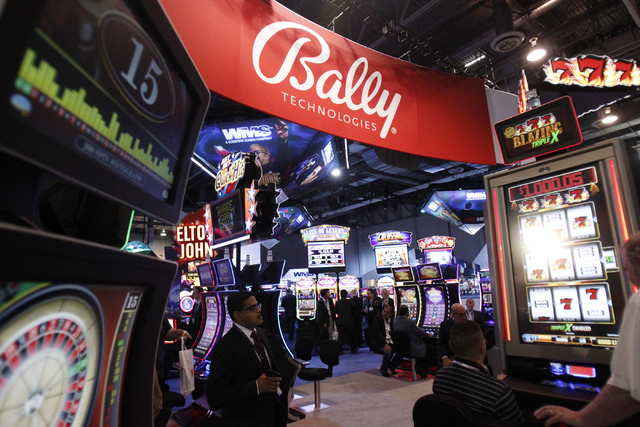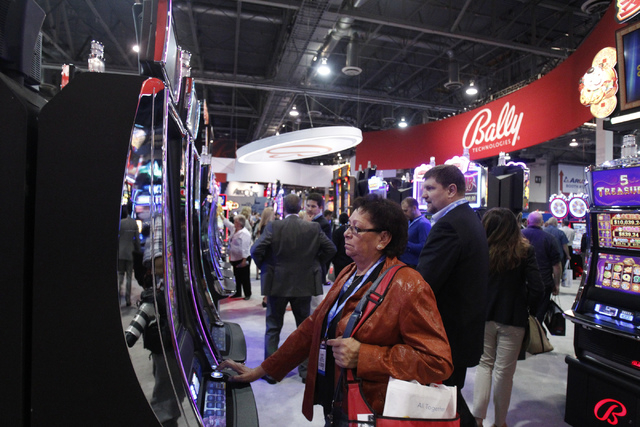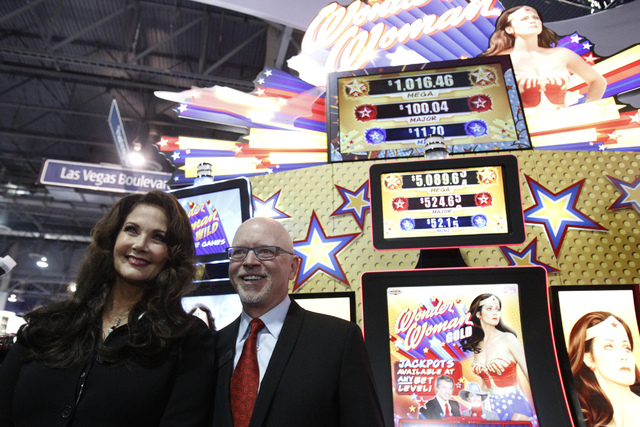Credit CEO Haddrill for Bally’s sound financial status
Richard Haddrill’s second term as CEO of slot machine giant Bally Technologies will be short-lived.
Seventeen months after he handed the reins of the gaming equipment manufacturer to his hand-chosen successor, Haddrill gave up his chairman’s seat and returned to the CEO’s desk on May 23.
Seventy days after taking over, Bally was sold to lottery provider Scientific Games for $5.1 billion.
The transaction was expected to close early next year but could be finalized by December. Haddrill, 61, will become vice chairman of Scientific Games.
Haddrill said there wasn’t a connection between his return to CEO and the sale, which took the gaming industry by surprise in July. Fifteen days earlier, GTECH Holdings announced it was buying International Game Technology for $6.4 billion.
“It took me by surprise as well,” Haddrill said. “There was no plan to do a sale of business or a major merger. We felt very good about our prospects for the future.”
Bally is one of the industry’s financially healthiest companies — casino operator or manufacturer. Much of the credit goes to Haddrill, whose first stint as CEO lasted eight years.
When he became the top executive in December 2004, Bally’s stock price hovered from $11 to $13 a share. Scientific Games will pay Bally shareholders $83.30 per share and assume the company’s $1.8 billion in debt. Bally’s net revenue has grown from $400 million annually to just under $1 billion in its recently completed fiscal year.
Bally had 1,735 employees in the 2004. Today, the manufacturer employs nearly 4,000 workers, an increase of 129 percent. Bally is licensed in more than 300 jurisdictions.
Last year, Bally spent $1.3 billion to acquire gaming equipment rival SHFL entertainment. The deal transformed the company into one of the industry’s most diverse manufacturers with seven reporting divisions.
Haddrill said other than the SHFL deal — and the company’s June acquisition of social gaming business Dragonplay for $100 million — Bally’s growth has been internal.
He cited increased innovation — the company has added five times the number of engineers than it employed in 2004 — and a thriving casino and slot management systems business that has about 40 percent of the gaming market worldwide.
Last quarter, analysts said Bally surpassed IGT as the industry’s leading gaming equipment provider.
“It was pretty gratifying after 25 years of not being there,” Haddrill said of the company, which in 1975 became the first gaming operator to be listed on the New York Stock Exchange.
After the Scientific Games deal closes, Bally will operate as a subsidiary of the lottery company.
The sale to Scientific Games happened quickly, Haddrill said.
When IGT put itself on the market publicly in June, Scientific Games explored a possible deal. By then, the lottery company had a new CEO, former Bally Chief Operating Officer and SHFL CEO Gavin Isaacs.
In April, it was confirmed Isaacs was working as a consultant to Scientific Games Chairman Ronald Perelman. In June, at the request of Perelman, Haddrill set aside Isaacs’ yearlong noncompete clause with Bally so he could become CEO.
“The familiarity with Gavin helped,” Haddrill said.
Once Scientific Games made the decision not to pursue IGT, the focus turned toward Bally.
“We weren’t for sale, but we agreed to listen,” Haddrill said. “I think they saw Bally as a better fit. It made sense for our customers, employees and shareholders.”
Once the deal closes, Bally’s slot machine and table games content will be easily distributed across multiple channels — slot machines, table games, online gaming, social gaming and lotteries.
Before joining Bally, Haddrill was CEO of lottery provider Powerhouse Technologies. The company was sold in 1999 to slot machine maker Anchor Gaming for $220 million. He said the idea of the lottery and slot machine businesses converging was considered 15 to 20 years ago.
“Now, you can easily distribute this content across different means,” Haddrill said.
More than a decade ago, gaming insiders thought Bally and slot machine rival WMS Industries would merge to compete against IGT. Scientific Games bought WMS a year ago for $1.5 billion, and the companies soon will be under a single ownership.
Haddrill said talks with WMS about a merger took place but never went beyond more than just the discussion phase.
“This industry consolidation had been talked about for many years and never happened,” Haddrill said. “All of a sudden, it started happening. The combination of low interest rates and this ability to take content across multiple channels allows you to leverage brands.”
Haddrill said he is looking forward to Bally’s future and the next phase of his career on the Scientific Games board.
“The brand is pretty strong,” Haddrill said. “It’s been around for 83 years. We have a lot to be proud of.”
Howard Stutz’s Inside Gaming column appears Wednesdays and Sundays. He can be reached at hstutz@reviewjournal.com or 702-477-3871. Follow on Twitter: @howardstutz.
































